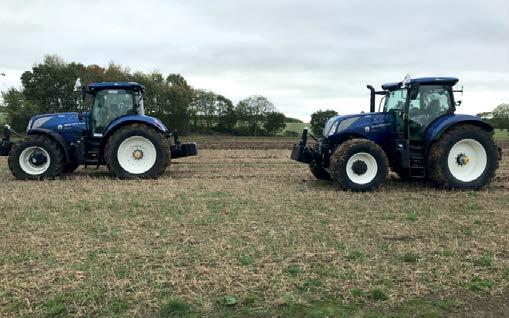WELCOME TO THE 8TH WORLD CONGRESS ON CONSERVATION AGRICULTURE Speech given by Professor Amir Kassam
Friends, This is an historic day for the CA movement. It was twenty years ago that ECAF, the European Conservation Agriculture Federation, organized the First World Congress on Conservation Agriculture in partnership with FAO. Today, thanks to continued support from FAO and ECAF as well as other sponsors and especially SWISS NO-TILL, we are gathered together here in Bern and all around the world to celebrate our success as the drivers of the biggest farming revolution to have occurred in our lifetimes. Let us celebrate our joint engagement and contribution to transforming farming from being the main source of land degradation globally, to becoming a driving force for conserving and rebuilding healthy soils and agroecosystems so that they can sustainably meet the world’s future needs for food and other farm products while helping to slow the pace of climate change and ecological breakdown. Let us celebrate our part in the 2 transformation of farming, from being a contributor to the many interconnected crises facing the world, to being a key part of the solution. It is no exaggeration to claim that our achievement in engaging millions of farmers across every continent in what has become known as Conservation Agriculture – or CA – has been a massive game-changer. We can and should take great pride in all we have done but we still face huge challenges to complete our revolution so that what we have pioneered is steadily improved and becomes the global norm in farming. Our task during these 3 days on-line, and in the field days, is to shape the future directions in which 14 DIRECT DRILLER MAGAZINE
we need to move together to achieve this in the shortest possible time. For this, we must apply lessons from our collective experience over the past 50 years or so. We have come this far because of the foresight and determination of some remarkable visionaries and pioneers – mostly farmers – in the USA, South America, Asia, Africa, Europe and Australia. These pioneers saw that conventional tillage, involving frequent inversion of the topsoil, was damaging the structure of soils, reducing their organic matter content, and making them susceptible to erosion by wind and water. They showed us that we could grow productive crops without digging or ploughing, and they devoted their lives to improving 3 CA technologies and sharing them with others in their own countries and beyond. Rather than list these pioneers by name, I invite each of you to think back to the beginnings of CA in your own country and to reflect on the exceptional people who challenged conventional wisdom and put their ploughs aside. One of the most notable of the early CA pioneers in the Global South was Dr. Herbert Bartz who sadly died recently. In 1972, with encouragement from Rolf Derpsch from GTZ, he became the first Brazilian farmer to throw away his plough. From then on, he devoted his life to improving CA techniques and promoting CA in Brazil and globally. Now, Brazil has become a leading CA nation with 43 million ha – or nearly 80% of its annual cropland - under various forms of no-till agriculture. Herbert was hoping to be with us today and had prepared a brief video message to inspire us to follow in his footsteps.
I am delighted that his daughter, Marie, has joined us in this Congress, and she will have more to say about her father this evening at the Social event where she will be showing the video. I invite you to watch another video now which Herbert made not long ago for a CA Congress in Africa. Let me now briefly touch on our achievements When the pioneers of No-Till said that good crops could be grown without digging or ploughing, most farmers laughed in disbelief and dismissed them as dreamers. Now, just half a century later, millions of farmers all over the world have taken them seriously. They have embarked voluntarily on all kinds of CA systems, no longer carrying out any tillage on their farms. The global area farmed using CA systems has risen from less than 1 million ha in 8 countries in 1970 to 205 million ha in 102 countries in 2019.
This is 15% of the world’s cropland area. In Argentina, Australia, Brazil, Canada, Paraguay, South Africa, Uruguay and the USA, CA methods are applied on more than half their cropped area. From 1990 to 2009, the CA area globally increased at an average annual rate of 5.2 million ha, reaching about 100 million ha in 2008. From then on until now, the CA area expanded at double that rate, attaining an average ISSUE 16 | JANUARY 2022























